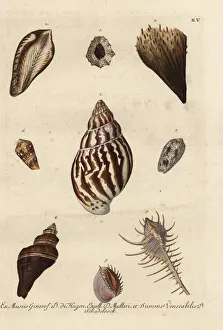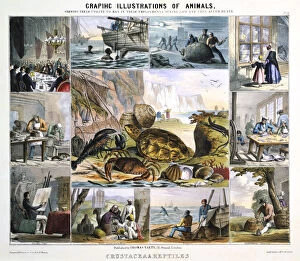Whelk Collection
"Whelk: A Fascinating Marine Creature and Symbol of Bygone Summers" Dog Whelks (Mussels) are a captivating species found in the vast oceans
All Professionally Made to Order for Quick Shipping
"Whelk: A Fascinating Marine Creature and Symbol of Bygone Summers" Dog Whelks (Mussels) are a captivating species found in the vast oceans, evoking a sense of nostalgia for bygone summers. Their presence on sandy beaches reminds us of carefree days spent exploring the coastline. Eggs of Common whelk (Buccinum undatum) can often be spotted delicately nestled on seaweed washed up on Sark's beautiful British beach. These tiny treasures symbolize new life and the cycle of nature. In an enchanting lithograph from 1878, we see a stunning depiction of Whelks, showcasing their intricate shells that have fascinated collectors for centuries. The artist's attention to detail captures the essence and beauty of these marine creatures. Whelks and sea snails with eggs create mesmerizing patterns along the shoreline, offering a glimpse into their reproductive journey. These delicate clusters serve as a reminder of the wonders hidden beneath the waves. Various shell specimens showcase the diversity within this family, including Chiragra spider conch, scallop, whelk, sea snail, among others. Each shell tells its own story through its unique shape and coloration. The symbiotic relationship between Hermit Crabs (Pagurus) and Sea Anemones is truly remarkable. Adamsia palliata gracefully adorns its crustacean host like living jewelry in an exquisite engraving capturing this fascinating interaction. An illustration from c. 1923 showcases seashells in all their glory—a testament to nature's artistry that has captivated humans throughout history. The lithograph transports us back to simpler times when collecting shells was both a hobby and an appreciation for natural beauty. Crustacea and Reptiles come alive in Robert Kent Thomas' artwork from c1850—each stroke revealing intricate details that bring these creatures to life before our eyes. Among them are magnificent whelks, reminding us of the vast diversity in our oceans.















































